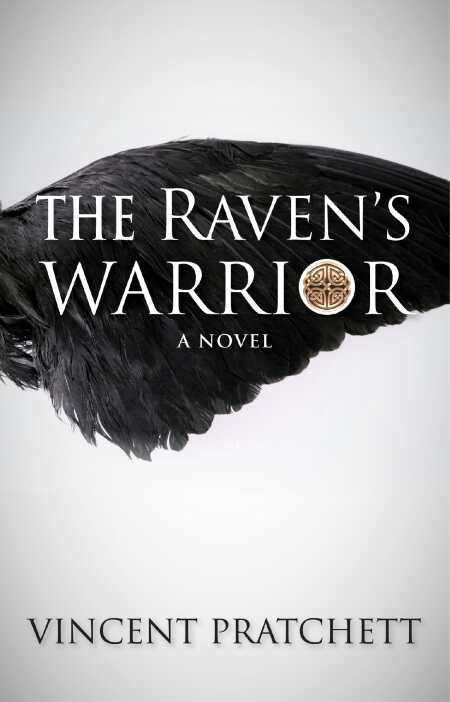The Raven's Warrior
- 2013 INDIES Finalist
- Finalist, Fantasy (Adult Fiction)
Terry Pratchett’s kin crafts a smooth, new branch of the Arthurian legend.
Debut novelist Vincent Pratchett takes readers from Celtic Europe to China’s Middle Kingdom in a fantasy tale that commingles Western European, Northern European, Middle Eastern and Chinese landscapes and cultures. The result is a novel full of spiritual growth, rousing fight scenes, and a respectful use of martial arts in both their philosophical and martial aspects.
Celtic warrior Vincent is taken by Norse raiders to a slave market far from his homeland. Dusty, weak, wounded, and near death, he is bought by a man and his female servant and settled into a wagon. The pair, whose names he mispronounces as Merlin and Sea Lass, are actually Mah Lin, a former Buddhist monk, and his daughter, Selah, a healer and herbalist. Vincent mistakes them for wizard and sorceress on first meeting. As Selah tends his wounds, she reveals their true callings. Vincent has also gained a guardian, of sorts: a raven has followed him since his Norse captors wended their way to that slave market.
On the way to the Middle Kingdom, Mah Lin teaches Vincent the way of the warrior priest and Selah educates him on nature’s warning signals and herbs’ efficacy. Another case of mispronunciation leads Selah to call him Arkthar, which is approved by the raven’s raspy repetition of his new name. His healing way and physical education are, however, in danger: an imperial commander seeks Mah Lin to revenge himself for a long-ago event.
Thus the mystical circle that began with Mah Lin/Merlin finds and joins with Vincent/Arkthar, the connection is made, and the readers know that The Raven’s Warrior is another branch on the tree of Arthurian legend.
Finishing a novel is a challenge; being first cousin to Terry Pratchett, one of the most beloved fantasy writers alive, might add even more reason to expect a well-written debut. Readers are in luck: Pratchett is a natural storyteller and he knows how to structure a fantasy novel that’s much more than that.
Pratchett’s approach to the Arthurian legend is rare if not unique. Katy Moran’s 2010 novel Spirit Hunter has several similarities to The Raven’s Warrior. Pratchett’s addition of a might-have-been China, an imperial ruler, and the deep knowledge of a martial artist cause a reader to pay closer attention to the story and how it unfolds. A ribbon of concern for the loss of old ways and skills (and their rescue) weaves through the novel as well. This is not your grandma’s Arthurian saga.
From his personal experiences as a traveler across Asia via ancient roadways (the routes of Genghis Khan, Alexander the Great, and Marco Polo), a martial artist and instructor, firefighting and teaching, Pratchett has indeed crafted a new branch of the Arthurian saga. The novel flows smooth as silk, the characters are as real as your next-door neighbor, and the setting and pacing are spot-on.
The Raven’s Warrior reads like the work of a mature writer well seasoned with much background material on which to draw. It will be interesting if Pratchett returns to this world for more of his vision of Arthur—the quality of this first foray into novel-length fiction bodes well for such ventures.
Reviewed by
J. G. Stinson
Disclosure: This article is not an endorsement, but a review. The publisher of this book provided free copies of the book and paid a small fee to have their book reviewed by a professional reviewer. Foreword Reviews and Clarion Reviews make no guarantee that the publisher will receive a positive review. Foreword Magazine, Inc. is disclosing this in accordance with the Federal Trade Commission’s 16 CFR, Part 255.

